Prologue
![Yanapaccha]() Parofes insisted on me using this picture, so here it is, small as can be. Sorry it's not of me dancing samba.
Parofes insisted on me using this picture, so here it is, small as can be. Sorry it's not of me dancing samba."You came all the way here to climb? Really?"
I've heard that quite a few times. Foreign people tend to look at me in disbelief when they realize there’s a female from Brazil in front of them, and she’s not dancing samba, instead, she claims she’s there to climb. Yup, that’s me.
I know there’s the stereotype of tropical country and all that… which I’m not getting into. I don’t know how I started climbing in the first place – I've always did (low altitude) mountaineering here in Brazil and never thought I’d learn how to tie a knot cuz I'm too much of an airhead, but here I am writing about having spent a month in the amazing and incredible mountains of the Cordillera Blanca. Don’t get me wrong, I love beaches. They remind me how special it is to be bored to death with sand covering your body all weekend, almost as if you were some rich old lady with nothing to do for a living except for spending money and going to the mall on a Monday. But they also feel like a waste of time since I could be hiking or trekking, or climbing, away from the usual crowds and noise that populate our coast.
Although we do have great rock climbing in Brazil, snow for us is like Mars for earthlings: it’s there, but we don’t belong.
I’ll keep this short since it’s not a super awesome climb of Huantsan or some new route on the Karakorum. If wanting to know more details, feel free to PM me. I accept free advice as well.
How it all started
![Artesonraju]() Artesonraju, the main goal on this trip. What a beauty!
Artesonraju, the main goal on this trip. What a beauty!![Jirón José Olaya]() My address for most of my stay on Huaraz, Jiron Jose Olaya, one of the few areas that "survived" the 70s earthquake.
My address for most of my stay on Huaraz, Jiron Jose Olaya, one of the few areas that "survived" the 70s earthquake.I think it’s worthy of explanation why I chose the Blanca, instead of an “easier” range in South America. In January I was in Ecuador, and guide and friend Nacho convinced me after much insistence that I should try technical mountains in the CB instead of the Brazilian’s second favorite hang out spot in the Andes, Huayna Potosi. I figured why not, since Cotopaxi and Antisana weren't exactly exciting climbs and I returned home a bit bored. I don't like crowds anyways, even less crowded mountains, and even less crowded mountains with noisy people and no adrenaline rushing sections.
This time I didn’t have a fixed schedule and plan A was Yanapaccha, Chopicalqui, Alpamayo and Artesonraju. The only one I actually was obssessed about climbing was Arteson, and I really did fell in love with the southeast route but obviously that would be a bit too advanced for me, so we’d try the north ridge. I got 30 days off work late in the season (it was this or nothing), figuring it would be impossible to get weather worse than the one we had in Ecuador earlier in the year, but still, it’d be sort of a gamble.
In the months before my trip to Ecuador I was finishing my grad school project so I had time for nothing, including training. This time was different, and I trained like crazy, even though July presented some challenging situations. I was ready to fly up the slopes.
So, on August 18th, I arrived in Huaraz.
First Days
![Panoramic view of Laguna Churup.]() Panoramic view of the Laguna Churup area.
Panoramic view of the Laguna Churup area.Having been to Peru previously, I didn't have much intention on doing city tours and visiting museums, so eating, sleeping and doing the Churup hike for acclimatization is what I did, nothing else (what a privilege to be able to sleep until 11 am though!) I met up with Beto, my guide (I know some people here are against using guides, but I’m against inexperienced people going to the mountains on their own, so while I’m part of this group, I’ll use a guide, although well, read the report until the end…). We would stay some extra days on Yanapaccha for skills review and some new lessons since it had been over 6 months since I saw snow and ice.
The Churup hike was quite nice and even though I was pretty breathless I was ahead of most of the group, which reassured me that the months of training weren't for nothing. But going up there and not climbing anything was a bit frustrating, especially
Churup being a seldom climbed, quite technical and inviting peak.
Back in Huaraz I ran into some gringo climbers coming down from mountains and got some info on conditions and routes, which just made me more anxious about getting started on my own climbs. These three days didn't seem to pass.
You people that live in mountainous areas have no idea what it is to spend so many months away from the mountains. As we entered the Llanganuco valley, I began to feel breathless, not because of altitude, but because of the magnitude of it all. Seeing from up close mountains like Huascaran, the Huandoys, and specially Chacraraju – mountains I’ve read so much about and that seemed so inaccessible – made me a bit dizzy… I was asking myself how do I begin trying to get to those peaks while my jaw fell on the floor. Well, you begin by learning and training, so there I went to Yanapaccha.
A small group was leaving when we arrived, and another small group made a two day climb while we were there. In fact they summited the day before we did, in the best weather we had while we were there. On that same day a Mountain Madness group arrived, planning to summit on the following morning, alongside us. Note that this is a sought after mountain in the range, and still there weren't more than two groups at one time on moraine camp. Thank goodness...
I spent a few days doing all the glacier school stuff I had already done in Ecuador (in fact I realized that as long as I live so far away from mountains I’ll always have to do it), except for crevasse rescue on a two-person rope team, which was new to me. Weather wasn't very good and we had snow almost every day, except on the afternoon before the summit bid, when it was hot as hell. On that last day I ice climbed under that same hot sun, getting soaked from head to toe and sweating like a pig, climbing up-down-traversing on a huge circuit Beto set up for me. After refusing to go at it a third time we went back to camp to eat and rest.
We woke up at 4 am, and the MM group had already left about an hour earlier. We caught up and arrived at the summit before they did. I lead through the easy glacier until we reached the bottom of the wall (we went up via the "new" direct route), when Beto took over the actual climbing until we reached the first bergschrund. From there we had 4 pitches to the summit, with little visibility, hard and soft snow at parts, and some ice as well. I was like a kid in a playground, I was finally climbing instead of just walking and that was just too much fun. But then, at the steepest part during the third pitch, I realized my right foot was coming out of my inner boots and the inner boots coming out of my plastic boots. The gaiters were all opened up and I was hanging on s,80 degree about to lose my boot (please don’t laugh. Well, do laugh, I did). I sat on the rope and fixed everything, went on climbing, and got to the summit after another pitch. Beto asked me what had happened, and after laughing a lot, he nicely commented how my boots weren't very good, to which I replied the usual “I’m a poor South American and cannot afford Spantiks, these were half price and will have to do”. That became a joke (on me) for the rest of the month.
We had a good laugh as we sat there watching the Huascarans play hide and seek in between the clouds, as well as Chacraraju, the Huandoys and Pisco appearing in between the clouds at times. I wished the wall had been longer, and higher, and harder, but this was just the beginning, and we’d have other opportunities for harder and really challenging climbs. I wondered about the people that climb mountains like Chacraraju, which is so off-limits to me. How they get there, how scary it is, how much commitment there is, and rambled on my thoughts until the MM people got to the summit and we could join ropes to get down faster.
We returned to Huaraz on the same day already knowing Chopi had not so nice conditions and all teams that attempted in the previous week turned around, sometimes with snow up to their waists. Inka Fest was going on and I managed to attend the opening and watch a few movies on the following days, aside from eating like a pig, and sleeping a lot.
It is worth saying that after Yanapaccha I decided to first and foremost eat some ceviche at a local’s restaurant, and thanks to that I got myself a case of Huaraz syndrome and couldn't get out of bed for two days, on top of eating antibiotics like they were candy.
Tocllaraju, 6032m
![Ishinca valley]() Ishinca valley and some attractive rocks asking to be climbed.
Ishinca valley and some attractive rocks asking to be climbed.![Tocllaraju]() Beto was moved by my bug filled stomach situation and decided to break some trail for the climb at night.
Beto was moved by my bug filled stomach situation and decided to break some trail for the climb at night.![Tocllaraju]() This is what's left of our attempt at Toclla. We went up to about 5350 m with snow up to our knees, not fun.
This is what's left of our attempt at Toclla. We went up to about 5350 m with snow up to our knees, not fun.![Heading to Toclla moraine camp]() An excruciating drugged up ascent to moraine camp.
An excruciating drugged up ascent to moraine camp. Because of creatures living in my body and terrorizing my stomach I ended up missing Silva Vidal's lecture, a day of rock climbing with some rad ass local kids, and postponed Toclla for one day. I was still on antibiotics when we left. Since I was pretty weak Beto thought it’d be best to have a donkey carry our heavy bags and instead of camping, to stay at the refuge. We decided on Tocllaraju due to Chopi being out of condition, even though it never attracted me much. In the end, Beto really thought Toclla would be more interesting because it had two technical pitches, and as days went by, my interest in attempting bigger walls was increasing, wherever it would be. I wanted to reach the 6000 m mark and this would be one of two opportunities on this trip.
The hike to the Ishinca refuge or base camp is supposedly quite easy as the elevation gain isn't much and the trail not steep, but I was so weak I was dragging myself and in disbelief that I could even finish the trail that day, worse still, carry the heavy climbing and camping load to moraine camp on the following day. I focused on just getting to the refuge and thought if I kept feeling like this we’d have to return. I did get to the refuge though, ate like a pig, and slept like a rock. By the end of the day I felt I’d give it a shot to getting to moraine camp.
The next morning, I woke up much better than the day before, but the trail was quite steep and I kept asking myself who had the brilliant idea of not hiring a porter (wait… that was me). Anyways, I did reach moraine camp faster than expected, and there was snow all over, which was not a good sign. I got pissed at everyone that told me Toclla was in condition. Ishinca valley wasn't as interesting as Llanganuco and we could have gone to another 6000er on a more interesting valley, but okay, we were already here, so I thought, let’s climb this and have fun. We arrived around 1 pm, ate, and then I collapsed in the tent for a few hours.
We heard and saw avalanches on Palcaraju’s glacier in the afternoon, and then even on Toclla’s glacier, right on our route. They went on throughout the night. You know the feeling I had here, but oh well, the climb was still on. We got up and headed right away up to the glacier with snow up to our calf, and as we progressed it reached our knees, and it was pretty tiring even though it wasn't steep, probably no more than 45 degrees. We stopped short of gaining the ridge because that’s where the avalanche happened during the night: we’d either run in that much snow or go around a longer alternative in that much snow, and then we’d have to go down in that much snow with those conditions. At around 5350 m we sat down to think about it. Snow had gotten into my boots and my feet were freezing. Beto called his girlfriend complaining we had brought all the equipment and camp up for nothing. We decided to turn around and descend, which was okay for me. He once again reminded me my boots aren't very good, even though they were once his favorites.
We rested for a few hours until the sun came up, packed camp, admired the landscape and started heading to the refuge. Since I was still pissed I rushed down without looking back and took me about 1h30 to get back. Beto fell way behind with his incessant picture taking and occasional conversations with Pacha Mama. Afternoon was spent in the refuge with Beto’s friend Monstro and his client, generally speaking nonsense and not caring conditions weren't good and that we didn't summit. In truth, I didn't care. I realized I need to stop attempting climbs I’m not really passionate about. We walked back to the pampa the following day and were lucky to find a taxi unloading stuff. We got back to Huaraz, and then met at Casa de Guias to check conditions on the next climbs. Ate like a pig, slept like a rock, again.
![Tocllaraju]() The morning after. Toclla looks beautiful. We are pissed.
The morning after. Toclla looks beautiful. We are pissed.
The Santa Cruz Trek
We got to Arteson base camp in two days full of breathtaking landscapes. On the first one we walked through small villages with children behind insisting on us giving them
galletas, then on from pastures and groves, till we reached first camp from where we could see Contrahierbas in the distance and the ridges of Paria on the opposite direction.
The second day starts with us gaining the lower slope of the left side of the valley, and from there begins an endless switchback upwards, always facing the magnificent Taulliraju. The valley that stays behind isn’t that impressive but that collaborates for the jaw dropping view we get once we cross Punta Unión. It is basically an 8 meter or so corridor in the middle of the pass, at 4750 m, joining the two valleys. When you get to the other side (Santa Cruz) you have a completely different view, and it is astonishing: on your right Taulliraju and its glacier hanging on steep walls over a turquoise lagoon, further away Ririjirca, then on the distance the south faces of Alpamayo and Quitaraju, then coming back towards you on the other side of the valley, the grand Artesonraju, and closer, Paria.
After taking a few thousand pictures and stopping several times to admire Taulli’s glacier which seemed about to fall, we rapidly descended towards base camp, me tripping sometimes as I was in awe of being so near such impressive mountains. I just wanted to climb everything, but Taulli definitely seems impossible. On the other hand, Arteson looked beautiful and very inviting.
In the afternoon, the Taulli glacier did fall, and although not a big avalanche of Himalayan proportions, it was still the largest one I've seen, especially considering I was quite close to the area just a few hours earlier. I was psyched up for the big climb and did not sleep very well with all the anxiety but oh well… I had the brilliant insight to ditch a lot of useless stuff and managed to stuff all of my climbing and camping gear into a 35 L backpack that was about to explode. I did manage to cut some 3-4 kg of weight for the following day.
Climbing Artesonraju
We woke up to clear skies and right in the beginning of the hike to moraine camp Beto figured, with that clear and sunny weather, it’d be better to attempt the summit on the same day, instead of having a camp high on the glacier. It took us 4 hours of steep trail and I arrived to moraine camp exhausted. Aside from eating, I took time to take a few pictures and just sleep as much as possible. We heard an avalanche on Paria and another on Arteson, again in the middle of the route. Mid afternoon the wind picked up, but that was nothing new. We got up before midnight and were off to the glacier, with wind speed picking up from the afternoon and already in what we could call strong. I knew with wind like this it would be impossible to walk on the summit ridge, but I’d be more than satisfied with just climbing the wall.
The Arteson glacier looks like it has many flat parts if you look at it from afar. During the day we figured we’d have to enter it on the right, walk all the way to the left, climb a step, then all the way to the right, cross a crevasse, climb another step, then all the way to the left again, then gain the wall. It shouldn't be too hard. Truth is, right from the start we had hard ice of 50-60 degrees, traga hombres, annoying penitentes and avalanche debris over which we had to literally run on. When we encountered hard snow, it was even steeper. All of this in about an hour of being on the glacier, and it felt like a lot packed into a small section. I was quite surprised with having these obstacles right away, one after the other, and wondered what expected us ahead. Not that it was bad, but it definitely felt serious.
After running across the avalanche area we reached the first step, a 20 m wall of 80 degree steepness. We quickly simul climbed it, and I figured we’d reach one of the “flat” areas I’d seen during the days. Yeah right! Steepness fell to about 60-65 degrees but still, not at all easy. I guess this was a more exposed area of the glacier for the wind here was even stronger and gusts were pushing me in and out of the slope. We had to make a long diagonal upwards traverse to the right that felt like it wouldn't end, I guess because the wind being so strong we had to use both tools very firmly on the hard snow (at least that to help…)
By the end of this traverse I could hardly keep my head up or remain upright. We had reached the ice bridge that we’d have to cross in order to get to the next step. I set up belay and Beto tried crossing it until it started collapsing under his weight. We then tried checking if there was another way, but without success. Then came the point when we could have done something stupid... We found a sort of ice cave inside the crevasse, at around 5500m, and sat there for about ten minutes that actually felt like 30. We were hungry, it was cold (-9 C/windchill -16C), the wind was getting stronger by the minute, I had the so called screaming barfies in my left hand and still, we just sat there staring at nothing, and didn't move for quite a long time. We had food, water, down jackets, but it was obvious what was going on.
We had to go down. But neither of us wanted to! If it was my choice alone I probably would have continued, and if it was his choice alone I figured he would have too. I finally broke the silence and asked “what do we do now?” as if waiting for a validation to keep on going. He jokingly replied “let’s wait for a helicopter”. We laughed but still, didn't move out of our state of trance, sitting there as if we were in a park in broad day light and pleasant temperature. It’s almost as if all that didn't matter and that sitting there would make the wind go away so that we could go look for an alternate passage. To this day I don’t quite understand what happened to us in that moment. Maybe summit (wall) fever?
What finally made us move wasn't the will power or common sense to do something right, but a loud sound of ice breaking on the crevasse wall right next to us. We got up in no time, jumped out of the crevasse and got on the slope again. Surprise or not, we now had gale winds. In between that spot and the step we’d have to descend, I was constantly getting sprayed in the eye with the snow that was being lifted, and the wind gusts blowed me to the slopes twice even though I was leaning on both ice tools, and I was doing more crawling than actually down climbing. Until we reached that 20 meter step, we literally couldn’t stand up straight. This was getting serious. Or it had already gotten serious already, and I didn't realize it.
Funny how a situation like this messes up your thinking. Before going down the wall I didn't anchor myself properly, fell twice while running in the avalanche debris area, and got quite confused on the icy area when leaving the glacier. Worse still, in that area we heard one loud crack for every three or four steps we took, it was terrifying and I just wanted to get the heck out of that glacier once and for all. I don’t know where the energy came from, but we ran like crazy until we reached the moraine.
Common sense took over me and I was relieved. Beto was pissed and cursed for a while. We went back to moraine camp, where the wind continued to pick on speed, and at moments I thought it would lift the tent up. It remained like this even after we got to base camp. On the following morning a huge cloud of snow was blowing out of Arteson’s summit, in what would have been our original summit day. We decided to skip camping in Llamacorral and went straight to Cashapampa. It was a good 5 hours to think over the frustration of not being able to finish the climb and to digest what we went through in the day before. Although I confess, I still think about it to this day, questioning if it was really that dangerous, if we should have kept on going up or not, if we chickened out and so on.
Arteson is one heck of a mountain, or like they say there, “
una montañassa”. I loved being there, and going through what we went through. If it had been sunny, breezy and easy, it certainly wouldn't have made an impression. It was for a sure a situation in which I expanded my tolerance for risk.
Next up we wanted to do more climbing, so came the suggestion of the Escudo (Shield) route on Huascaran or the Pisco wall, but both were packed with so much snow "one could stick their full arm onto the snow", or so we heard at Casa the Guias upon our return to Huaraz. The season was pretty much over, and mountain after mountain was shutting itself to climbing. I was decided on NOT doing any walk up routes, which were the only ones still "doable" even though the precipitation that hit the range every two days. The end of season was palpable and I still had a few days to play around... but where? Frustrating!
![Artesonraju]() Top priority for the 2014 season.
Top priority for the 2014 season.Huamashraju, 5434m
![Huamashraju]() The approach.
The approach.![Huamashraju]() Huaraz lights seen from the glacier on Huamash.
Huaraz lights seen from the glacier on Huamash.![Huamashraju]() Miguel leading the first pitch. It was very icy and around 70 degrees at steepest parts.
Miguel leading the first pitch. It was very icy and around 70 degrees at steepest parts. ![Huamashraju]() The second pitch: some steep ice climbing, a traverse to the left and then some mixed climbing up some slabs.
The second pitch: some steep ice climbing, a traverse to the left and then some mixed climbing up some slabs.![Huamashraju]() Summit, and the Ishinca valley mountains on the background.
Summit, and the Ishinca valley mountains on the background.![Huamashraju]() Rope got stuck on the cornice and a certain someone had to climb it all over again to get it out.
Rope got stuck on the cornice and a certain someone had to climb it all over again to get it out.While on the Toclla refuge, I found a Desnivel guidebook with tons of mountains and routes that weren't in Brad Johnson’s book. Beto pointed me to what could be an interesting experience to me, a variation of a not often climbed route on a seldom climbed mountain, with a mixed climbing pitch. After getting down from Arteson, Beto questioned me if I wanted a 6000 m (actually try Toclla again... no!) or a hard route and I picked the second. I was pretty excited and a bit scared of climbing rock with crampons and ice axes as I had never done that before. We were feeling strong and decided to do it in two days.
The mountain is part of the Huantsan massif, and an hour drive away from Huaraz. It’s the triangular peak with the small glacier you see from the Cafe Andino terrace. I had more beers than I should in my rest day after Arteson and I wasn't as fast on approach as I thought I’d be, but still it took us about 3h30 to get to moraine camp. Bad news is that because of the receding glacier there’s a lot of moraine to cross before actually starting the climb. Don’t know why I was hungrier than usual this day and kept thinking of getting this done with so I could eat that sexy burger from Trivio’s and drink tons of beer. All we had to eat was noodles and crappy soup. And Oreos.
We got up at about 2 am and after 2h30 of moraine, we got to the glacier, which actually begins with two sections of penitentes about 2/3 of my height. We take a long time to cross them before finally reaching a more “walkable” part, about 40-45 degrees of hard snow for about 150 m, and then we get to the bottom of the wall. From there we climbed the first icy pitch diagonally to the right and set up a belay station in between seracs with pretty big icicles hanging from them (I've read somewhere they look like monster’s mouths with sharp teeth and they really do). By the time I finally got to the belay station, I had another nice case of “screaming barfies”, which I solved by screaming some nice curse words in all languages I speak until the pain was gone. Thankfully the sun was already rising and so was the temperature.
We began the second pitch climbing diagonally and then traversing to the left, then we finally reached the rocky ridge made of big blocks of red granite with some nice cracks, and I guess this is what was graded V+ in the guidebook. After finishing this pitch we then made a second anchor in order to reach the other side of the ridge, make an exposed traverse and finally gain the summit. Again I was super excited with the easy mixed climbing and wanting more! From up there we could see Churup, almost all of the mountains of the Ishinca valley, and of course, majestic Huantsan herself. We hang out and celebrated, me dreaming about eating a juicy burger. It was the first time I summited a mountain in absolute perfect weather. It definately felt strange...
We descended a different route in order to avoid the traverse, but then when we got to the icy part of the glacier and the penitentes it was torture. I was dying to eat the damn burgers and get a cold beer and all I saw was an endless field of penitentes. Ok, it wasn't endless, it was just painful to down climb. When we finally got out of the glacier I took my crampons off and swore I wouldn't put those damn things again for a year (which is a total lie, I already miss them, but that was my stomach talking). On the way back to camp I ate my last bit of food, chocolate Oreos which, come to think of it, kinda look like small burgers.
Back to Huaraz I finally got my burger, and chicken, and fries, and beer, all in one meal. I had another rest day and then another two days for playing around. I was satisfied with the mountains and routes I had climbed (well not really, but weather had been bad all month, so were conditions), and figured it’d be more fun to relax in Hatun Machay. So there we went.
![Huantsán]() Sexy Huantsan seen from the summit of Huamashraju.
Sexy Huantsan seen from the summit of Huamashraju.Hatun Machay
![Hatun Machay]() Night falling over the "bosque".
Night falling over the "bosque".![Hatun Machay]() Dani Moreno climbing, and Edu Marin on belay, on a 7c+ route. Strong guys, and very fun.
Dani Moreno climbing, and Edu Marin on belay, on a 7c+ route. Strong guys, and very fun.![Hatun Machay]() Warming up on He-Man, a V+, Erotico sector.
Warming up on He-Man, a V+, Erotico sector.![Hatun Machay]() Attempting Kumbaya, a 6b with a smearing crux on La Tapia sector.
Attempting Kumbaya, a 6b with a smearing crux on La Tapia sector.I could finally be lazy, drink some alcohol and not worry about being tired and all that lack of air. I’m not a huge fan of sport climbing, even less of bouldering, but these two disciplines leave me lots of room for making excuses not to climb when I’m in the crag. And certainly, I didn't want to stay in Huaraz doing nothing. All the climbers were gone and it was just full of trekkers with their annoying trekking poles. My (now ex) boyfriend was tormenting on Skype and Facebook every time I went near a WiFi connection and I needed to get away again,
ASAP!Having said sport climbing isn’t much my cup of tea, I must say there’s one sport climbing crag in Brazil that I absolutely love, called Serra do Cipó. And in Hatun Machay, which is a lot like Cipó, I felt like that: the place is amazing, huge, with infinite potential for new routes. The people at the hut are amazing, the climbers are great, and while I was there I met Adidas sponsored Edu Marin and Dani Moreno, two of the top rock climbers in Spain, along with a filming crew, and accompanied by Cesar, a super fun aspiring guide from Huaraz. What great people! I could be lazy and climb grade 6 routes without having to feel sorry for myself, because everyone seemed to be there just for the fun of it (sorry to be writing this, but in some places in Brazil the atmosphere in sport climbing isn’t exactly like that). So, I was surprised with the atmosphere, and happy to be there. I climbed about 6 or 7 routes in a day and a half and was satisfied with it. I could still rock climb! And lead!
I brought with me some beer and a bottle of wine, so before dinner we went for a small stroll around the “bosque” and drunk up atop a boulder while the mist took over the valley and Manu Chao sang out loud in my cell phone. I was feeling at home.
![Hatun Machay]() Cesar doing the last route of the day.
Cesar doing the last route of the day.
The end
![Extremos bar ceiling]() You have to be really drunk to miss a date like that.
You have to be really drunk to miss a date like that.![One final beer...]() One final beer with friend Chuski before boarding the Cruz del Sur bus that would take me back to reality... oh no! :(
One final beer with friend Chuski before boarding the Cruz del Sur bus that would take me back to reality... oh no! :(My last two days were of celebration and partying, hitting most of the bars of Huaraz, except for Tambo and the likes (I’m scared of
bricheros), foosball matches (of which I won about 80%) and drunk people saying nonsense and writing wrong dates on ceilings of bars. After a month of focusing so hard on climbing, it was well deserved.
Wow! So much white space!
Afterwords
![Artesonraju]() As happy as can be, hours before climbing Artesonraju.
As happy as can be, hours before climbing Artesonraju.The sound of crampons crunching snow bellow the feet is delicious and something I yearn for all year long. Whenever I’m climbing rock in Brazil and getting my ass kicked I remember how much easier it is to climb ice and snow. I loved the short section of mixed climbing. It’s so much easier than crimps and correct body positions, although I must say dihedrals are cool. Maybe they’re even cooler if you have crampons on, who knows... I’m happy having climbed or attempted these mountains, and even though I’d never be fully satisfied, it would have been nice to have climbed a longer wall than the one in Yanapaccha.
Peruvians are extremely strong in the mountains. They walk standing up on steep slopes, run on trails, carry some ultra heavy loads, seem to never get tired, and are super fast and organized with setting up and taking down belay stations. I know good climbers are like that too, but while they do it at altitude, it just looks too easy. Also worth saying that I was harassed by two guides as well as almost every man involved in the mountaineering industry in Ecuador, while in Peru I had absolutely no problems whatsoever, and was respected at all times. So much so I felt more like one of the boys than anything else.
I liked that these mountains were a step up to me, meaning actual climbs instead of walk up routes (nothing against them though). Yes, I did have a guide (although he was not at all those guides that do everything for you, quite the opposite…), and Beto really did teach me a lot on Yanapaccha, but in most times it was more of a partnership than anything else, and what I really had to rely more on him for was route finding, which is something I got a lot to work on. Other than that, I climbed as if I was climbing here with my partners. I did not lead any pitches – which I wanted, but I guess it was due to lack of opportunity (didn't feel ready in Yanapaccha but didn't know we wouldn't get to do Alpamayo or the Arteson wall), but I did lead on glaciers (in Arteson I was a disaster, totally lost on the way down). Bringing with me the knowledge from trad climbing in Brazil definitely sped up the learning process, after all, it’s not that different. A whole bunch of myths I had in my head, regarding climbing in technical mountains, were demystified. In the end it really isn't as complicated as I had been thinking. In fact, to me the hardest part was always walking on moraines with plastic boots, what a pain… Not much words on acclimatization because I acclimate pretty well, and this time it was again near perfect, having had a few light headaches on the first nights in Yanapaccha.
Also great was to, even late in the season, meet so many more experienced climbers, and hear their stories, ask questions, be annoyingly curious and learn about every possible aspect of climbing: things you don’t read in books and that only come with experience. Also amazed at how these people were extremely humble climbers, and I’m grateful to them and to the climbing community in Huaraz as a whole, for the openness towards someone like myself (meaning female from tropical country travelling alone to climb snowy peaks... even Peruvians would make fun of me saying it doesn't get cold in Brazil... it does! It even snows!), as well as for enthusiastically sharing their knowledge, stories and support.
Next up is the 2014 season, and the plan is to return to the CB, for a longer time (no, I’m not going to the World Cup). I feel I’m ready to start tackling some peaks with a partner as long as I don’t have to do the route finding on glaciers on my own. I hope to meet some SPers while I’m there, have a few beers, beat everyone on foosball, and finally, I correct some typos on the ceiling of Extremos Bar.
Thank yous, gracias, obrigados, danke, grazie...
I met a bunch of climbers there that I didn't get a chance to spend more time with or exchange contacts, so thanks to all (if you ever read this) and especially the group of 4 Spaniards I hung out with in the first days and the beta on Arteson. Also, I tend to mingle with locals a lot, and ended up hanging out with many Peruvian guides, cooks, porters, agency people and what not, whom I'm thankful for their company, advice, and for sharing their experience. I must thank my family for putting up with me too, as well as my climbing partners in Brazil who had to hear my weekly training reports for months, even though they didn't ask for it.
I must mention the people at
AltaMontanha.com, largest mountaineering site in Brazil, for inviting me to be a columnist and letting me share these stories as well as the not so glamorous explorations in Brazil.
A final heads up for
Parofes, who taught me the basics of setting up this trip report. Obviously I didn't learn very well because it looks a mess.


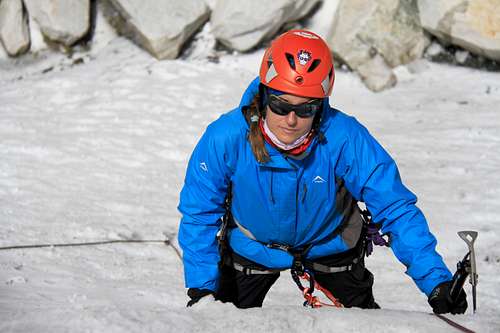

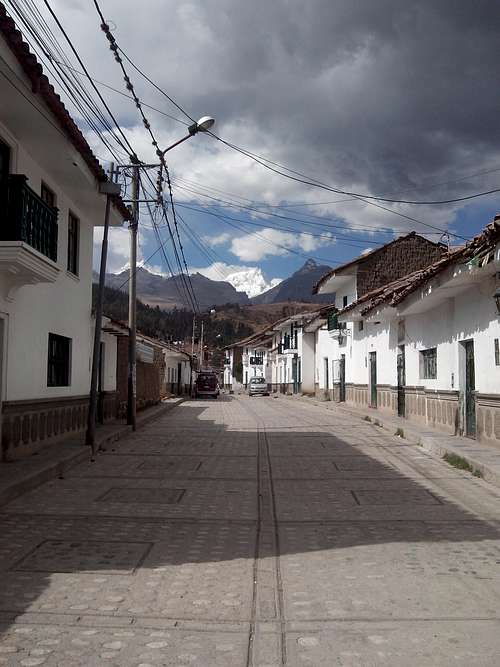

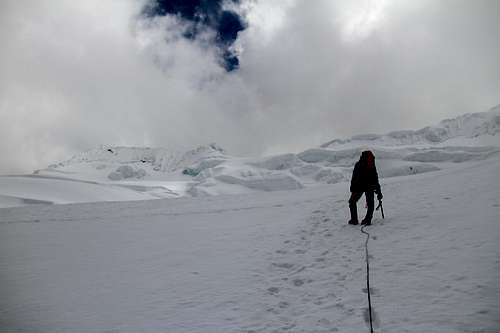
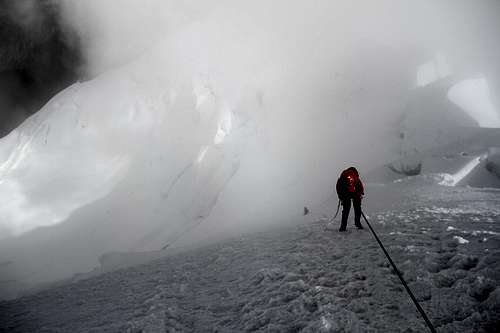
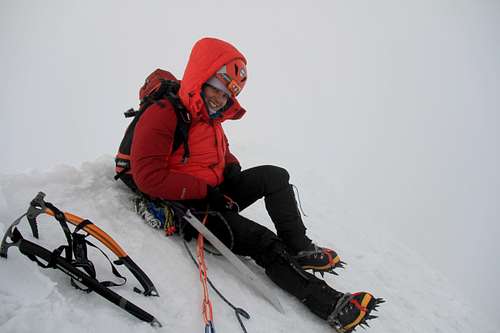
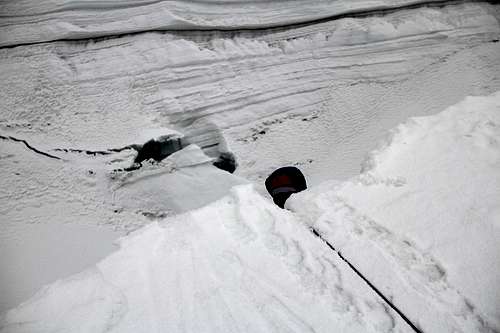

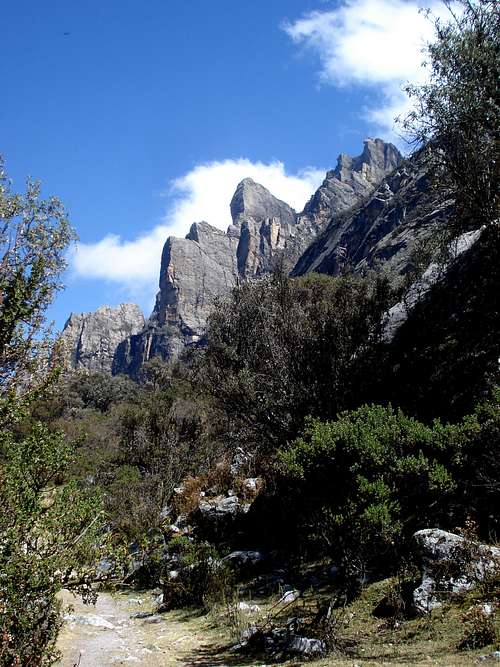
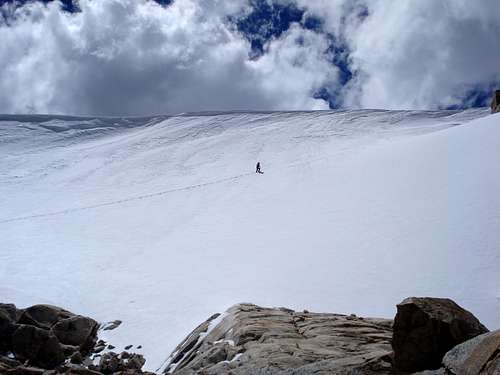

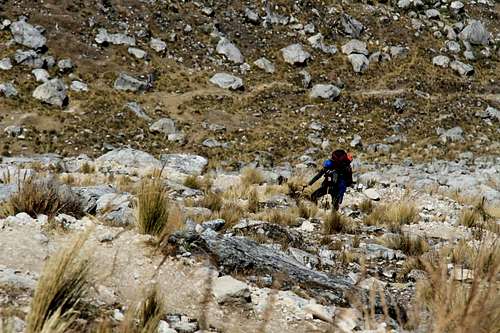
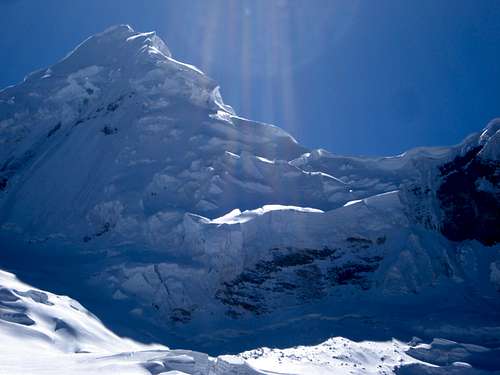
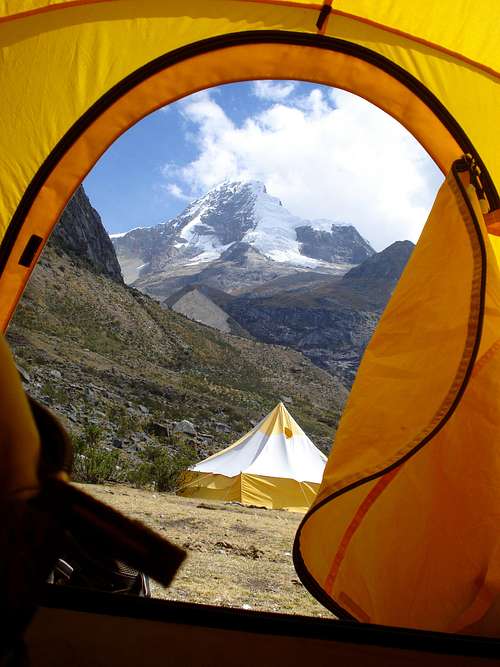

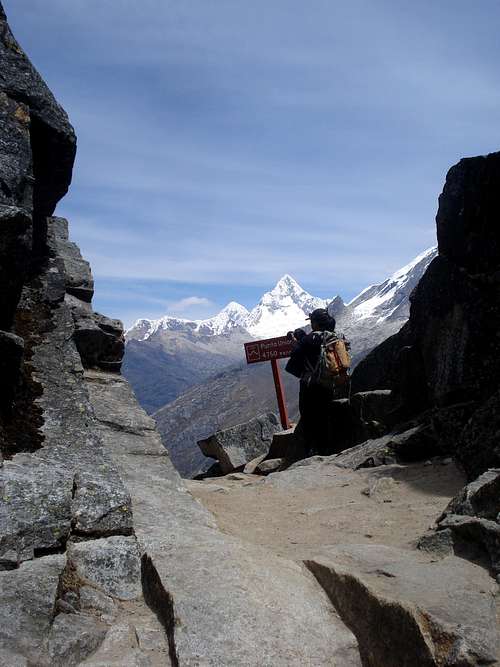
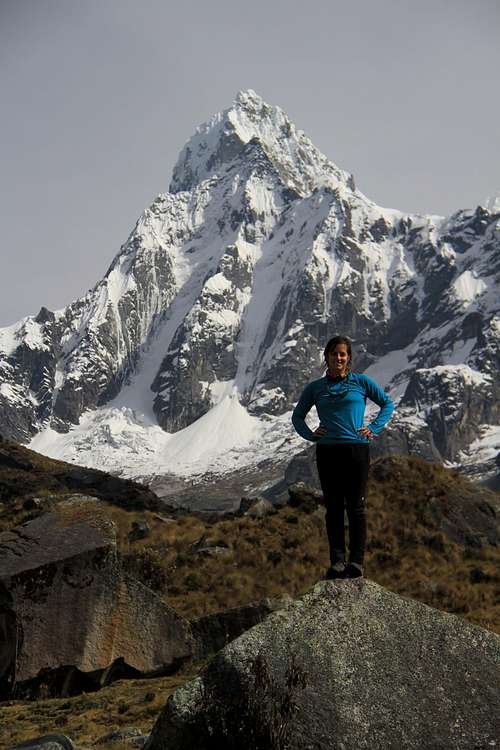
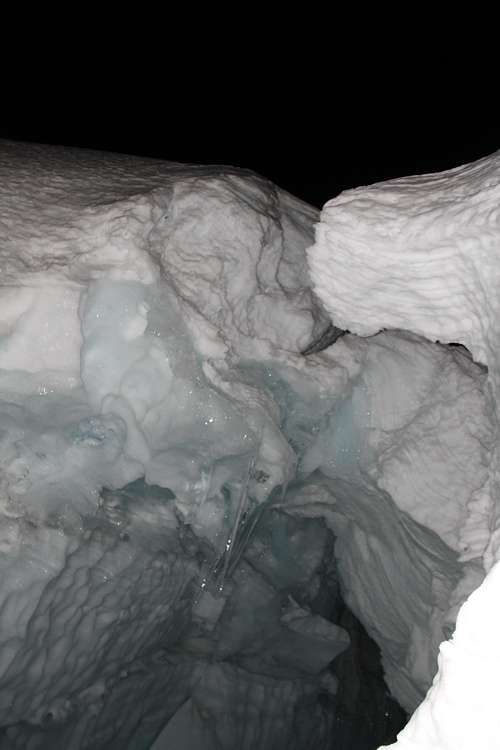
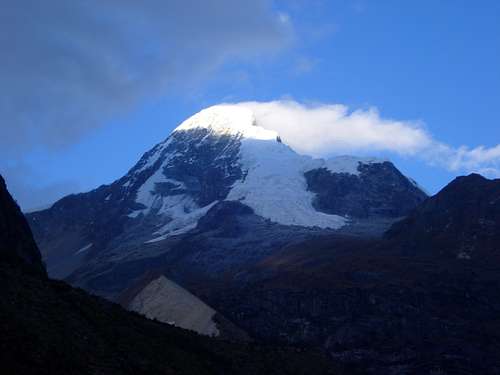

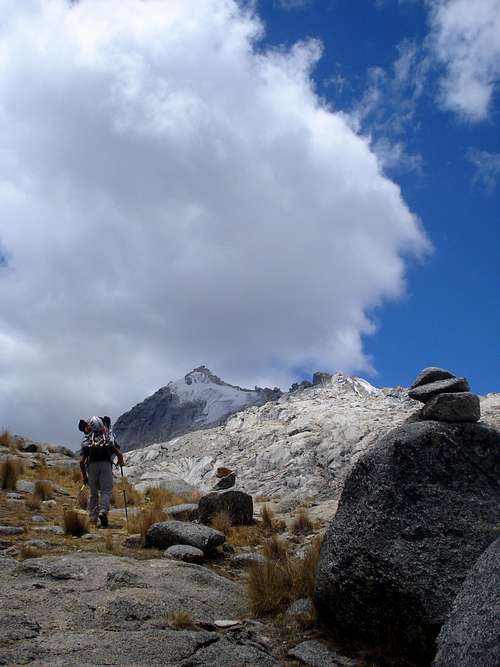
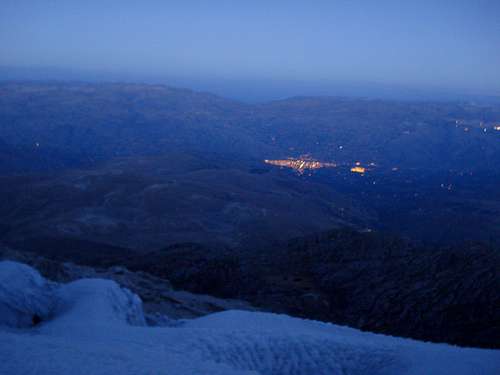
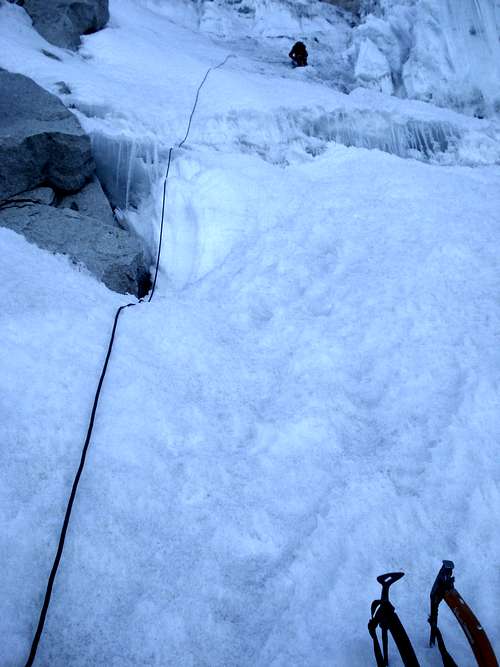
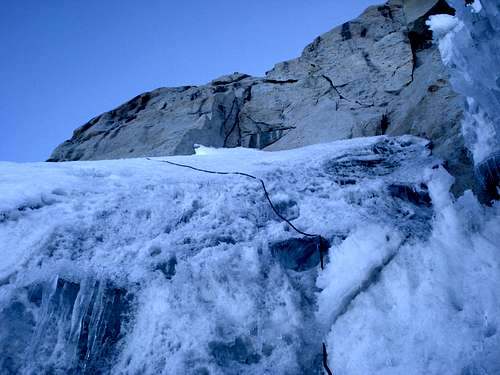
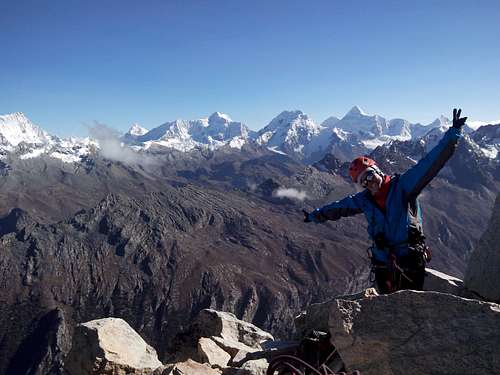
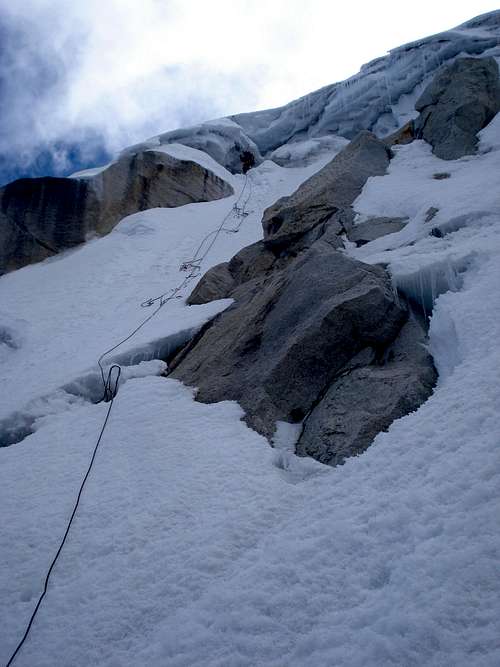
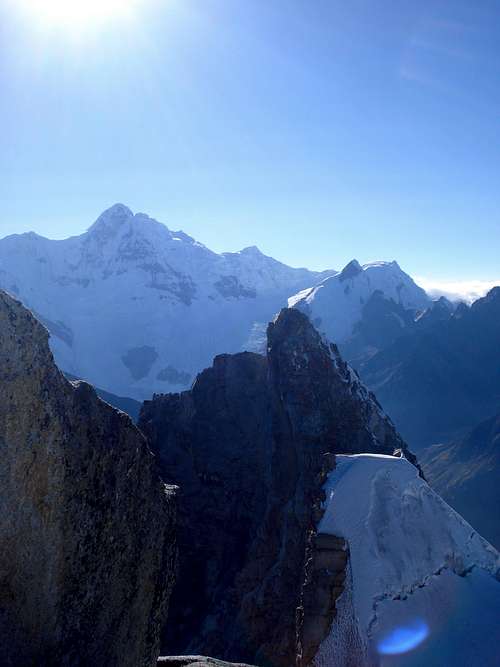
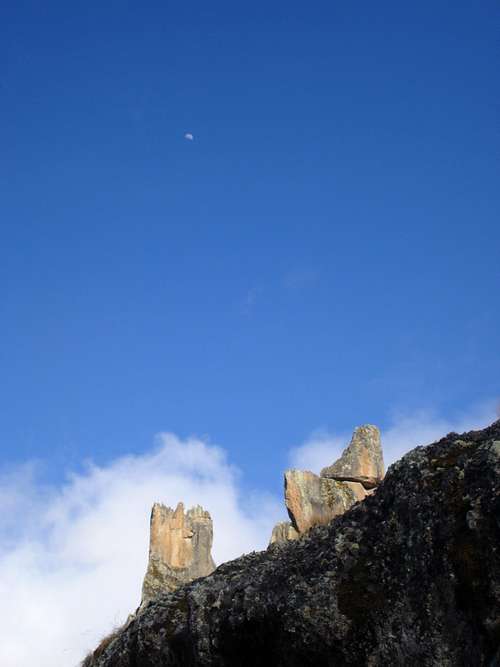
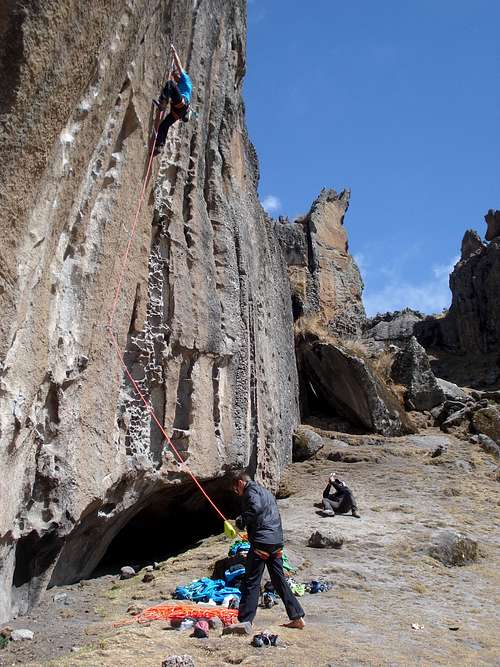
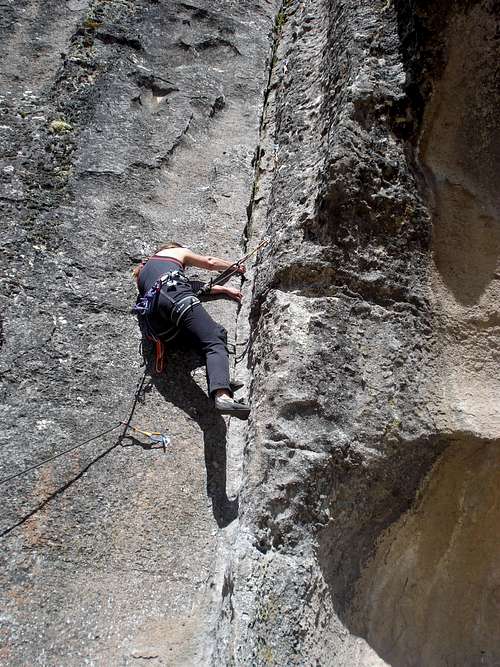
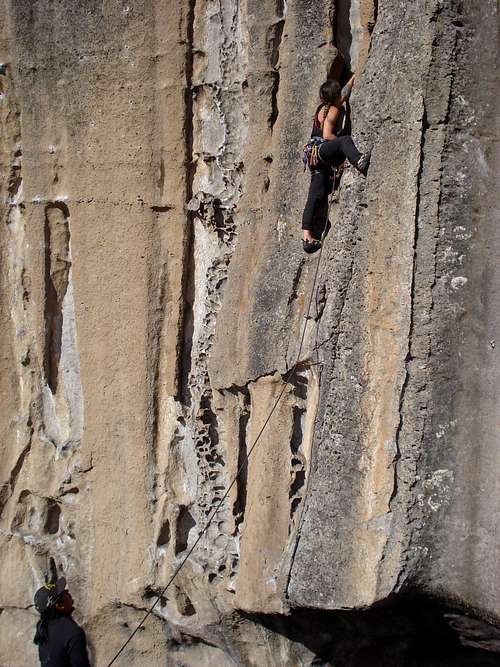
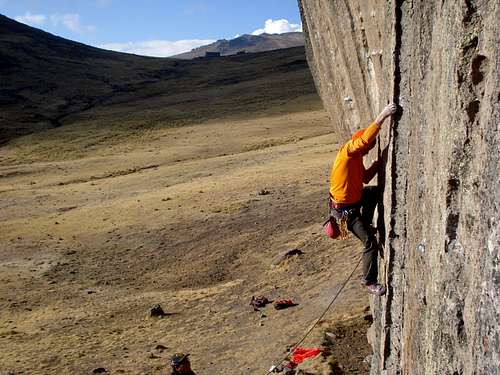
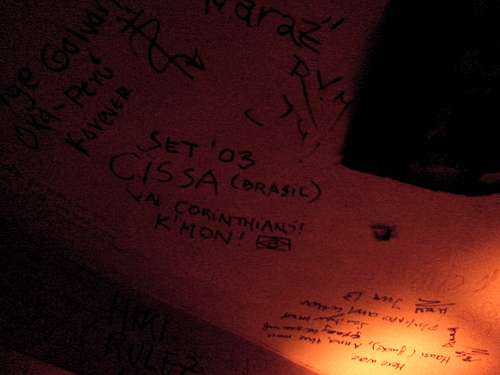
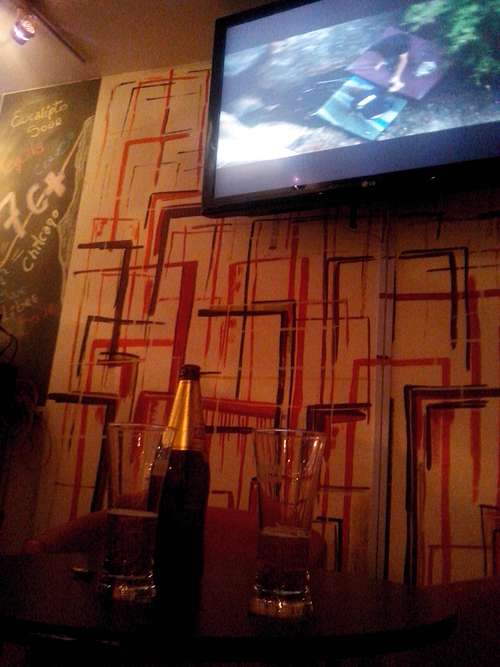
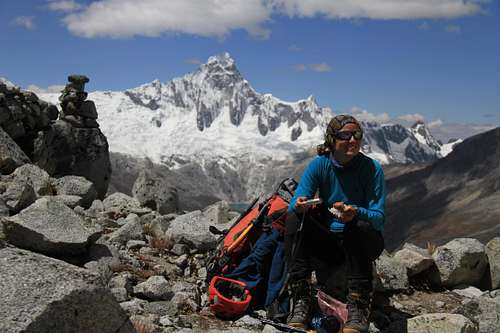



Comments
Post a Comment